Many electric vehicle owners, including Tesla owners, are struggling with rapid tire wear, while others seem to have tires last over 40,000 miles. Interestingly, the critical reasons for the rapid wear are not always linked to aggressive driving habits, and many of the owners who report the rapid tire wear do not own Performance trims. Let’s examine the issue of rapid EV tire wear in detail and learn from some owners who have seemingly overcome this challenge.
Related Story: The Best Place To Take Your Tesla For Tires
Our top-of-page statement is a paraphrasing of a post seeking help written by N.G. Here is what N.G. wrote in full:
Does anyone have suggestions for really long-lasting tires? I live off a very windy road and have a long daily commute, and I’m burning through tires at a rate of 1 set per year. The last ones I bought had a 75,000-mile warranty, and they (only) made 20,000. The shop is refusing to honor the tire warranty because it’s a Tesla. Not sure how that can work, but I know I’m burning up tires very quickly. Can anyone recommend some fantastic, long-lasting tires?
Many EV Owners Report the Same Tire Problem - Rapid Tire Wear
If N.G. were alone in having rapid tire wear, we’d say that the car may be out of alignment and that perhaps the driving style of the owner contributed to the rapid wear. However, Tesla and other electric vehicle clubs and groups on social media are packed with these same types of posts. Let’s list a few out and see if we find a common theme.
- K.K. Tesla Model Y owner reports: “Is there a tire that can handle the weight of my MYLR?
- This set has 12,000 miles on them…down to 3/32nds! Help?”
- E.I. A Rivian R1S owner reports: “I'm living it with a Rivian R1S. Tires last between 10-15K miles.”
- A.C. Tesla Model Y LR owner reports: “2022 MYLR. The stock Goodyears only lasted me 16K miles.”
- C.E. Reports on a Ford Mustang Mach-E: “Mach-E has 12k miles. This is the second set of tires in that amount of time. All four tires look the same. What is going on?”
- M.A., a VW ID.4 owner, posted: “022 ID.4 Pro S, rear-wheel drive, and I'm currently on my fifth set of rear tires. Most of my driving is on the freeway, commuting to and from work, and I don't drive aggressively. I'm only getting around 8,000 miles on the rear tires. My current mileage is about 35,000, and while the front tires still look good, the rear ones consistently wear out every 7,000 to 8,000 miles.”
- M.D. says, “My Nissan Ariya’s tires only got about 8k before they needed to be replaced.”
As you can see, a wide selection of electric vehicle owners report that they suffer from unacceptably rapid tire wear. Many preface or add to their posts or comments with a disclaimer that they do not drive aggressively. Clearly, this is not just a small selection of owners. It is a very popular topic on nearly every battery-electric vehicle social media site one visits.
What Factors Contribute to Rapid Tire Wear?
There are many factors that impact tire wear. Let’s first say that, obviously, the tires need to be properly sized, have the proper load rating (often XL for EVs), and be used appropriately. None of the posters we are reporting on are talking about winter tires used in summer or ultra-high-performance tires used in any sort of performance driving. So, if the tires are appropriate for the vehicle, what other factors impact the rate at which they wear down?
#1 Torque Wears Out Tires - And It Is Not the Max Rating That Is the Issue
First up is torque. Torque is the twisting force applied to a tire. One thing we love about EVs is that they can provide their full torque rating from a start. Unlike with internal combustion engine-powered cars with a wide range of gear (or CVT) ratios, EVs are direct-driven through one set gear ratio. In normal driving, ICE cars use very little of their maximum rated torque. Their transmissions keep the car well below the maximum available torque for virtually the whole time they are in use unless the driver acts aggressively with the power pedal.
We often hear counterpoints to the argument that torque can cause rapid tire wear. For example, a person may say, “My BMW M5 has more torque than my EV, but it does not wear the tires faster.” While the BMW may offer more peak torque, it does not mean the driver is using it. ICE vehicles start at very low torque, and only enter the maximum torque rating area at around 2,000 to 4,000 RPMs. Below that RPM point is a lot of covered miles. EVs have all their torque available as soon as the tires start to rotate.
And EVs have abundant torque. This is why they put up such great 0-60 MPH times. An electric Mustang Mach-E GT has 700 lb-ft of torque. An ICE Mustang GT has about 400 ft-lb.
#2 Weight Wears Out Tires
It’s almost shocking that people debate whether EVs are actually heavy. We recently tested the Dodge Charger Daytona R/T Stage 1. It weighs 6,500 pounds. The Dodge Charger ICE vehicle with its heaviest engine weighs 4,595 pounds. Nearly a ton of added weight for the EV. A Mustang Mach-E GT weighs about 5,000 pounds, and an ICE Mustang GT weighs about 4,000 pounds. Cherry pick the comparisons all you like, but EV batteries add about 700 pounds to 1,400 pounds to the weight of a comparable ICE vehicle. More weight means that when fitted with the same tire, the heavier car will have shorter tire life.
#3 Tire Size Can Impact Tire Tread Life
This section may seem a bit more nebulous and harder to define exactly, but the size of a tire matters when it comes to treadlife. In fact, some tire manufacturers base their treadwear warranty on the size. EV manufacturers want low rolling resistance, so they don't put as meaty a tire on some of their vehicles. This is not always true, but it is often true.
#4 - High-performance Tires Wear Faster Than Standard A/S Touring Tires Do
If you want to prolong tire life as a tire designer, the formula is simple. More rubber. Taller treadblocks that have less interstitial space and as hard a compound as can be tolerated for the application. High-performance tires are softer and have tread blocks with less height. Don't buy that type of tire if you want longer life.
#5 Suspension Matters in Tire Tread Life
If you have any problem with the suspension, or if the car’s alignment is not right, you can pretty much count on fast tire degradation.
#6 Tire Pressure Is Important If You Want Maximum Tire Life
If you underinflate your tires, your tires will have more wear on the outside edges. You will have a lot of other issues as well. If you overinflate, the center section will wear more rapidly. For the best tire life, properly inflate your tires.

#7 - Rotate, Rotate, Rotate For the Best Tire Life
You are going to hate reading this, but EVs have shorter service intervals than many mainstream ICE vehicles. Let’s take the Tesla Model Y and Model 3 twins. If you read the manual, it will tell you to rotate the tires every 6,250 miles OR FEWER. If you are not rotating your EV’s tires at least as often as the manual suggests, you’re just throwing tire life out the window. When you shop for tires, avoid models with directional tread. Buy ones that can be swapped from side to side as well as front to back (unless you have a car with different size tires front to back, like some ID.4 trims do). This allows the best possible combination of tire rotation options.
What Solutions Have EV Owners Found To Solve Rapid Tire Wear?
Some of the solutions that EV owners have posted reflect our above overview. Here’s what we found helpful, as posted by EV owners:
- G.R. “Michelin ones lasted me a good (long) time. Not the high-performance soft ones. Just the regular ones.”
- K.D. “Slow down, don’t corner so hard, don’t play games.”
- G.L. “Pielli Scorpion A/S3 Rotate every 5k. Lasted me 50k miles.”
- J.M. “Try a top-of-the-line tire like the Michelin. You get what you pay for when buying a cheaper tire.”
- R.C “Go with an all-season tire. My Tesla has 20k, and the tires look new. Continental ProContact. I rotate front to back every 6000 miles.”
- R.E. “Check the alignment.”
We’ve done a deep dive on this subject, but there's always more to learn. We’d love for those who own an EV and have made a change to get more tire life to comment.
- Have you experienced short tire life with an EV?
- Did you make a change that helped to prolong tire life that you can share to help others overcome this issue?
Please share your story or best practices to enhance tire life in the comments section below.
Image of Tesla shop area with piles of tires everywhere by John Goreham. Image of Tesla getting new tires courtesy of Jay Condrick of Boston Mobile Tire. Screenshot of Tesla manual listing tire rotation interval courtesy of Tesla, Inc.
John Goreham is a credentialed New England Motor Press Association member and expert vehicle tester. John completed an engineering program with a focus on electric vehicles, followed by two decades of work in high-tech, biopharma, and the automotive supply chain before becoming a news contributor. He is a member of the Society of Automotive Engineers (SAE int). In addition to his eleven years of work at Torque News, John has published thousands of articles and reviews at American news outlets. He is known for offering unfiltered opinions on vehicle topics. You can connect with John on Linkedin and follow his work on his personal X channel or on our X channel. Please note that stories carrying John's by-line are never AI-generated, but he does employ grammar and punctuation software when proofreading and he also uses image generation tools.


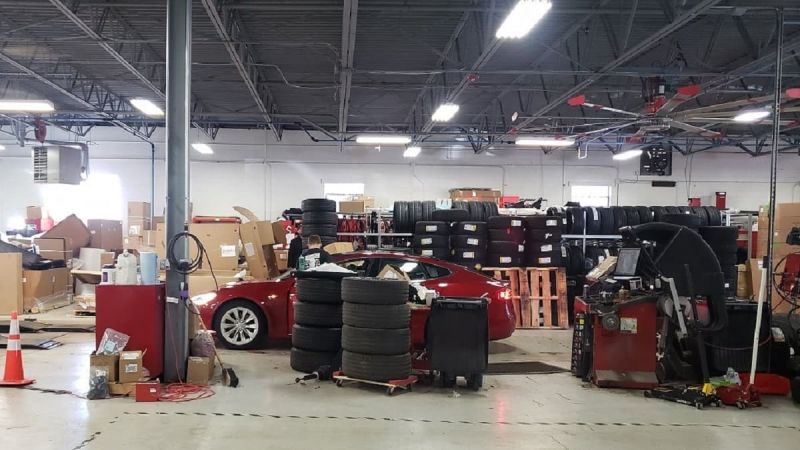





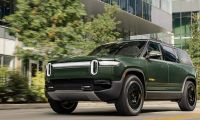
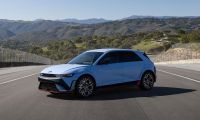
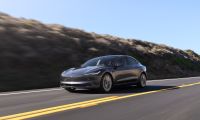

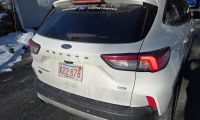
Comments
Say what you will, but EVs…
Permalink
Say what you will, but EVs sure are cute!
So the solution to the tire…
Permalink
In reply to Say what you will, but EVs… by Buzz Wired (not verified)
So the solution to the tire problem is for the driver to solve by doing workarounds? The REAL problem is at the manufacturer level. The tires are supposed to be made for the specifications of the car not the other way around. If the manufacturer actually took the time to ensure that the tires met torque specs of the car instead of selling products that meet the bare minimum, the issue would go away. The real burn is that they refuse to honor the warranty even though the tires normally have plenty of tread, yet that split on the side walls. This by all means is a manufacturer defect and the warranty should be honored.
Regen causes wear in the…
Permalink
Regen causes wear in the same way that torque causes wear, it is just reverse torque after all. I noticed it most on a m3 SR+ rwd - Tesla did not rotate my tires for some reason and it ended up with massive difference in wear from front to back. So that elliminates mass and you would expect weight to be higher on the front during braking also. I suspect diesel cars have a similar issue - high torque plus strong engine braking (reverse torque) just not as severe
Peerke, thank you for adding…
Permalink
In reply to Regen causes wear in the… by Peerke (not verified)
Peerke, thank you for adding this comment. You are spot on. Great points.
I have a model y performance…
Permalink
In reply to Peerke, thank you for adding… by John Goreham
I have a model y performance and ended up putting the same brand tire as factory but wider. I also went with "MO1" not the "T0"... M01 are designed for Mercedes Benz. The tire size for the front are 275/35-R21 but the M01 tire tread width are 1 inch wider... Then I went with 315/30-R21 in the rear. Factory 275 tread width is 8.8 inches... The 315 wide tires have a tread width of 11.8. So 3 inches wider of tread on factory uberturbines.
I drive a very heavy model X…
Permalink
In reply to Regen causes wear in the… by Peerke (not verified)
I drive a very heavy model X and went over 45K before wearing out my first set of tires. Maybe don't drive so aggressively? An EV that isn't braking and accelerating harder than an ICE vehicle of the same weight will have similar wear. There's nothing magic about the energy source.
Regen or engine breaking…
Permalink
In reply to Regen causes wear in the… by Peerke (not verified)
Regen or engine breaking should cause no more tire wear than applying brakes in a deceleration event. You are not applying opposite torque at the wheels to slow down, but friction to the ongoing rotation.
I am pretty hard on my tires…
Permalink
I am pretty hard on my tires on my Nodel Y, and I am at 93,000 km on my original tires. Was this person drag racing or something?
I was very surprised at just…
Permalink
I was very surprised at just how fast the tires wore out on our 21 VW ID4 First Edition. Factory tires lasted about 10K. Swapped for Michelin Cross Climate 2. Even though we could not rotate them, they still had half their tread left when we traded it in with 40K.
I currently have a 2023…
Permalink
I currently have a 2023 Tesla Model Y Long Range. I replaced the first set of tires at 48,000 miles and the second set at 43,000 miles. I drive rideshare full time, which means I drive on many different roads and conditions daily.
A couple of years ago I managed to get 58,000 miles out of a pair of rear tires on my 2016 Tesla Model X. The Model X has staggered tire sizes, meaning the front pair and the rear pair are different sizes and the tire shop won't even bother to rotate those tires. They will however get excited about selling you new tires because Teslas just eat through tires, until you put the salesman back in place and inform him that you just managed to drive 58K miles on tires rated for 40K miles while not rotating the tires.
I have been driving a Tesla just over 7 years now in four different Teslas. The first three were purchased used and the current Model Y was my first new one. I've had a 2012 Model S 85, a 2016 Model X 90D, a 2020 Model 3 SR+, and the current 2023 Model Y LR and have over 360K Tesla driving miles under my belt. Only once in that time have I gotten an alignment and that was on the Model S after a replacement of the ball joints.
Here are my suggestions for tire wear:
• Purchase the road hazard insurance/ certificates first before you do any real driving. Discount Tire will sell the insurance to you even if you didn't buy the tires through them. With this purchase, the tire shop will complete tire rotations for free and repair or replace any tire that has found a road treasure throughout your journey.
• Keep an eye on your tire pressure. The suggested tire pressure on the Teslas is 42 psi. The Tesla has that reading easily available for viewing. I am in the habit of checking any time I hit a bad pothole or debris. The tire pressure will fluctuate and increase while you drive, which is normal. I do carry a portable tire pump so I can get the tires back to 42 psi weekly. The current ambient temperature affects tire pressure, so check regularly.
•Drive the speed limit and don't be in a race to get to the limit. Just because you can doesn't mean you should.
•Slow down on curves and exit ramps. The yellow and black signs may just be the suggested speed limit for the curve, but your passengers and tire wear will appreciate your cooperation with the civil engineers that did the math for that suggestion. Tires wear more evenly when you're not driving in the sidewalls.
* LOL* it's all about your…
Permalink
* LOL* it's all about your foot, kids.. don't blame it on the weight of the car. I consistently have gotten over 50,000 miles in my Model 3 and Model Y OEM stock rubber.. our friends get less than 15k on theirs. Don't drive like a jack rabbit. I have fun with moderation. But keep a lid on it under normal daily driving. And let the regen stop the car. That takes planning and self control. I'm a bit tired of this repetitive clickbait theme in news articles that I know not to be true personally. Just like I'm tired of the insurance cost articles for Teslas. I pay $77/month for full coverage with State Farm with $1,000 deductible for my MY, and I'm a male under age 60.
As to the core of this…
Permalink
As to the core of this article, the shop was absolutely right to deny replacement under warranty, but their reasoning that it was "because its a Tesla" is baffling. The tire manufacturers mileage warranty is a warranty against manufacturing defects for that many miles. It IS NOT a guarantee that the tires will last that long, SPECIFICALLY BECAUSE there are so many factors that affect tire wear that are out of the manufacturers control. Consumers need to educate themselves better, or at all. While the reasoning behind EVs wearing tires faster presented in this article are accurate, the author should have included an explanation of tire mileage warranties.
Maybe ease off the 'gas…
Permalink
Maybe ease off the 'gas pedal' a little bit. Not every start needs to be a drag race.
Seems like a Tesla thing. I…
Permalink
Seems like a Tesla thing. I had a mach-e with 40k miles and the original tires still going strong with at least another 10k left on them probably more.
Part of the problem may be…
Permalink
Part of the problem may be caused by the difference in how the wheels are driven during turns. The distance around the turn is different on the inner and outer tire tracks. An ICE car uses a differential that allows one wheel of the pair to freewheel during the turn so that the tires don't have to slip to accommodate the different path lengths. If the EV potentially driving each wheel with a motor doesn't accurately accommodate that need during turns, the tires will wear much faster.
My 2021 Model Y LRAWD came…
Permalink
My 2021 Model Y LRAWD came from the factory out of alignment. First set of tires only made it to 17k. Had it aligned and put Michelin A/S 4 Plus on it and had them rotated regularly. Got a little over 50k out of those. Now trying the Hankook ION EVs.
50k on Factory tires I…
Permalink
50k on Factory tires
I easily got 50k on the factory tires of my MachE GT. I also drive "spiritedly."
My suggestion? Stop using heavier regen settings with no brake pedal input, especially one pedal drive. Any time you are accelerating or decelerating, you are putting additional wear on your tires. With one pedal driving, the regen is basically at the highest setting. Most people are not very good at modulating the accelerator to have the drivetrain in a coasting state. The result is subtle, but constant cycles of acceleration and deceleration (drivetrain actively braking instead of something closer to coasting) with a heavy vehicle.
Use cruise when you can, and save OPD for stop and go traffic use.
There isn't an engineer…
Permalink
There isn't an engineer worth his salt, that would disagree, that regenerative breaking uses more rubber than conventional breaking. Consumption of tires at this rate, all but negates the negative carbon footprint of electric vehicles.
I have a Chevy Bolt EUV. 2…
Permalink
I have a Chevy Bolt EUV. 2 yrs old with 18k miles. Still on the same set of tires with plenty tread. And I live in Las Vegas, high heat and dry weather are rough on tires. At this rate I'll likely get 4 yrs or 45k miles. Which for put here on any car (not truck) that's good. I think it's the way people drive with there new found torque. If your smashing it at a green light and regening hard, your going to see more wear. Period!
I have a Chevy Bolt EUV. 2…
Permalink
I have a Chevy Bolt EUV. 2 yrs old with 18k miles. Still on the same set of tires with plenty tread. And I live in Las Vegas, high heat and dry weather are rough on tires. At this rate I'll likely get 4 yrs or 45k miles. Which for out here on any car (not truck) that's good. I think it's the way people drive with their new found torque. If your smashing it at a green light and regening hard, your going to see more wear. Period!
Make sure you get touring EV…
Permalink
Make sure you get touring EV tires. I have Goodyear Electricdrive. 40k miles and only down to 5/32.
Funny how my Polestar 2 is…
Permalink
Funny how my Polestar 2 is getting 35k miles out of soft compound tires my previous BMW didn't get any more life out of
Maybe stop driving your…
Permalink
Maybe stop driving your Teslas like lunatics? With great power comes great.. tire responsibility! (?) Seriously it's almost every day a Tesla flies around me doing 30 over the speed limit just because they feel special and think they drive F1 cars. There go your tires. That's a premium price to pay if you drive like that. I have an EV too (Ioniq 5) but I only really gun it up to the speed limit and I'm happy with that. 35K miles on OEM tires and still probably 10K more on the Michelin clock.
I have a 23 model Y. 50k on…
Permalink
I have a 23 model Y. 50k on continental tires. Probably 5k left. I keep it on chill.
EV owners should know before…
Permalink
EV owners should know before they buy, EVs are 2 to 3k lbs heavier that your normal caŕ. EVs use regen braking to stop the vehicle. Meaning your tires are wearing out as you slow your car down. With 2 to 3k lbs more to stop guess where all the wear goes ? Your badly designed multi-motor EVs also don't have intelligent slip/traction detection. Mean unnecessary tire wear. Drive a normal car until the EVs designers learn a little more about mechanics of machines.
If they are offbrand tires…
Permalink
If they are offbrand tires and not a publicly traded brand such as Michelin or Bridgestone. There's your problem. Stop buying from private sellers who can't meet the revenue if a publicly traded brand and resort to offbrand tires. Not all tires are the same but if this is you, your frugality is to blame.
A tire sales and product professional
I have Nokian One tires on…
Permalink
I have Nokian One tires on my 2018 Model 3, and have 53,000 miles on them, bought April 2022. They have an 80,000 mile warranty. They’ve lasted longer than any other tires for this car. I’ll probably replace them at 60,000 miles
Use Tesla's Chill Mode. It…
Permalink
Use Tesla's Chill Mode. It'll decrease tread wear and the amount of energy required to drive a mile. I keep it Chill for 99 percent of my miles, and use Sport Mode when I'm impatient, bored, or feeling decadent.
I had pirelli's on my '23…
Permalink
I had pirelli's on my '23 ID4 and they lasted 36k miles. We can't rotate because we have a staggered setup.
However, Michelins and Hankooks are crafted to withstand the extra heat and weight from EVs. If I had the money to invest in the new Hankooks EV ion series I would get those.
This time I bought my tires at Costco just to be extra reassured about my tire mileage warranty. They won't decline 👍🏼
I wonder if the EV owners…
Permalink
I wonder if the EV owners who have significantly shorter tire life than most EV users have a long commute and drive up and down a lot of hills. Mine last about 35K miles, I have a model 3 standard plus. I do not have a long commute and it's all pretty much flat. It also seems that the heavier EVs have more wear, someone has to come out with a tire designed for EVs for this to be truly sustainable...
Pagination